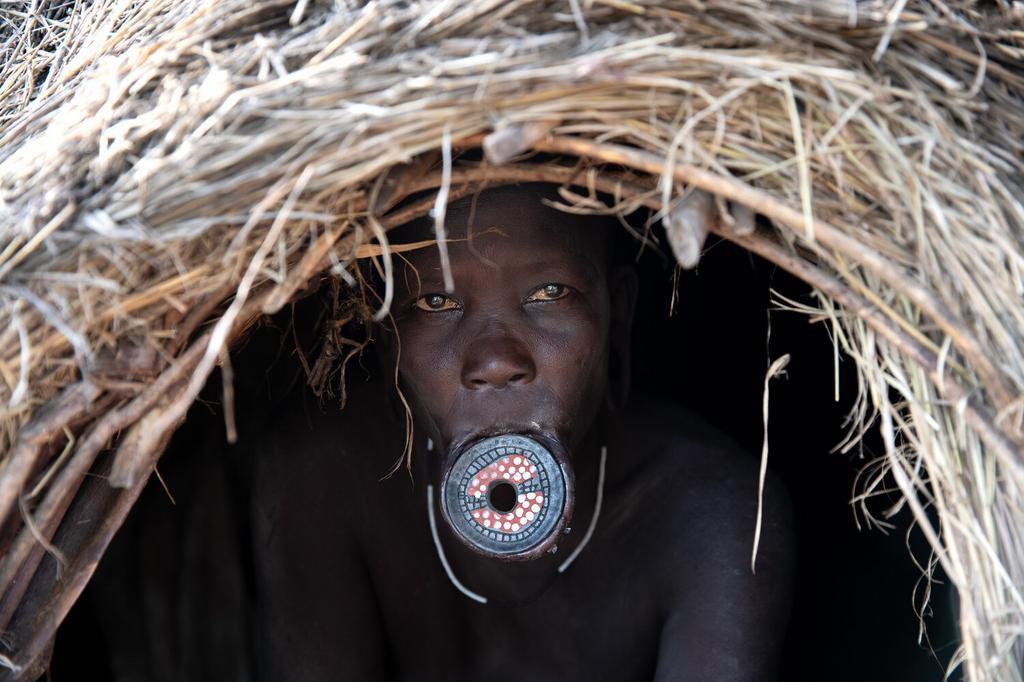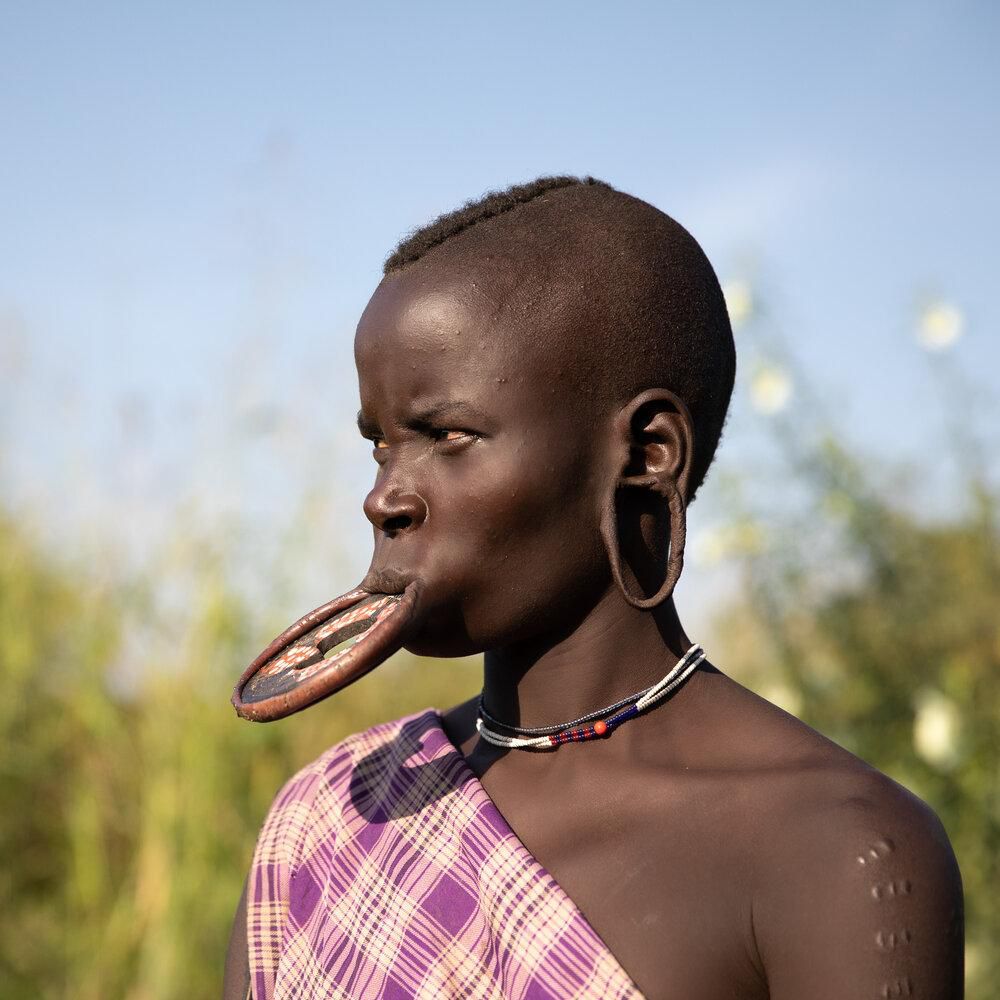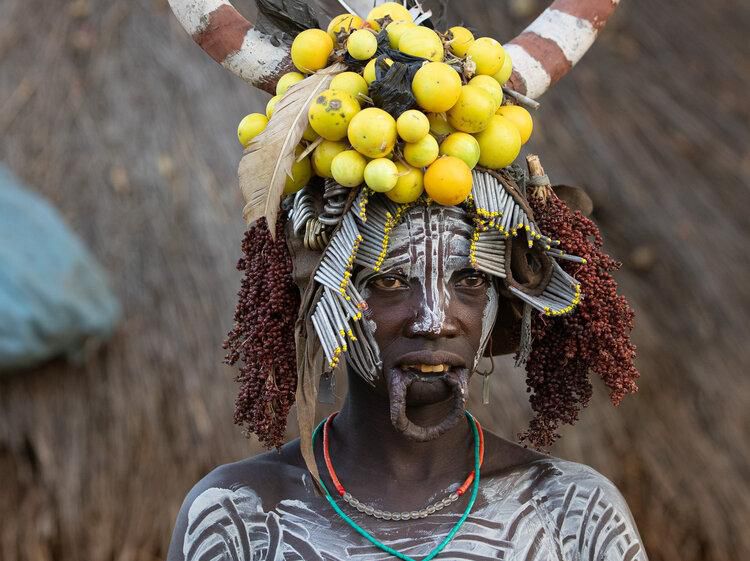How the slave trade birthed this Surma tribe beauty tradition
)
The Surma tribe is an amalgamation of the Suri and Mursi tribes. They are one of the last groups in Africa who still wear lip plates. The Mursi Tribe are in the Lower Omo Valley and the Suri Tribe live in the Upper Omo Valley.
Traditionally the women in both of these African tribes wear lip plates. Lip plates symbolise honour and beauty among their women.
The Surma women start wearing lip plates at age 15 but the origins of this tradition are unclear.
The Mursi tribe lip plates
The Mursi Tribe are visited more by tourists due to their location close to the Omo Valley town of Jinka. The Mursi Tribe live within the Mago National Park which borders the Omo National Park. When travelling from Jinka you pay the entrance fee for Mago National Park and then a mandatory armed scout will escort you to a Mursi tribal village.
The Suri tribe lip plates
The Suri Tribe are in the Upper Omo Valley, which doesn’t look far from the Mursi Tribe when looking at a map, but due to the mountainous terrain and inaccessible roads, the Suri are quite isolated. There are additional challenges in getting to the Suri Tribe and staying with them, so they receive a lot fewer tourists. The Suri Tribe live around the town of Kibish in South West Ethiopia very close to the border of South Sudan.
Why do they wear lip plates?

Like many traditions and cultural history of tribes, the stories are passed down verbally from each generation. Local elders in villages and local guides can have varied opinions based on what they’ve been told. So the origins of wearing lip plates will never be known 100%.
However, it is most commonly believed that this body modification was used to disfigure the girls and women to make them less attractive to slave traders.
But then down the line, the Mursi and Suri Tribe lip plates became a much loved and wanted symbol of beauty, and it soon became linked to fertility and eligibility to marry.
The lip plate process begins when a girl is 15-16.
How lip plate body modification takes place

When the girls begin puberty their mother usually starts the process by inserting a small wooden stick below the lower lip. The wooden stick is replaced by bigger sticks/plugs and then clay disks that gradually get bigger to keep stretching the lower lip.
During this process, the lip can get infected and it can also break if stretched too quickly. It is not uncommon in a Surma tribe village to see women who have their lower stretched lips broken with both sections dangling and pointing towards the ground.
Two to four of the young girls' bottom teeth are also removed in this body modification process so the lower lip and mouth can hold the lip plate. The lip plates are also called lip discs or lip plugs.
Certain processes of getting a lip plate do hurt, but once the lip has been stretched to the desired satisfaction it does not hurt.
A symbol of pride and beauty
The men pay the chosen girl's father with cattle for marriage and the bigger the lip plate the more cattle it will cost.
The women understand how much their husbands have paid for their marriage and wear their symbolic lip plates when they serve food to them or in celebrations or ceremonies.
However, often the girls have been promised to a man for marriage before they start the lip plate process with the bridal dowry already agreed.
There is no doubt that the men see it as a sign of beauty and the women with lip plates take great pride in this symbolic part of their culture and their identity. The lip plates can be made of wood or clay, but most often clay. Often decorated with patterns and paint from their local resources, especially the lip plates in the Mursi villages.

How the tradition survives to date
The tribal tradition of the lip plate is a girl's choice and many of the younger generation are choosing to discontinue this practice. The government has also put pressure on stopping this practice as it can lead to infections which can cause serious health issues. The men highly regard the traditional lip plate culture, but most seem to respect the wishes of the girls on their decision.
Final thoughts
The lip plates are thought to have started during the slave trade period to prevent attackers from taking the Surma women. Now they are upheld as symbols of pride and beauty even though the tradition is slowly dying away. The lip plates are not permanent and can be removed to eat and drink. The majority of the day they are not worn with the women choosing when to wear them. They stretch their lower lip around the outside of the clay disk/plate to insert it and can remove it quickly too.
)
)
)
)
)
)